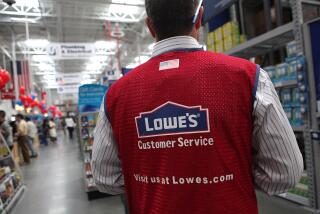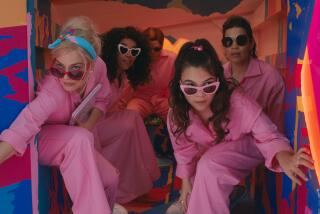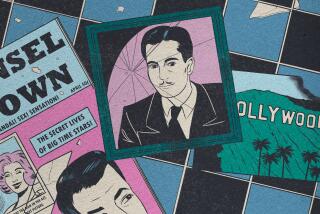A year after Frances McDormand’s Oscars speech, are inclusion riders making progress?
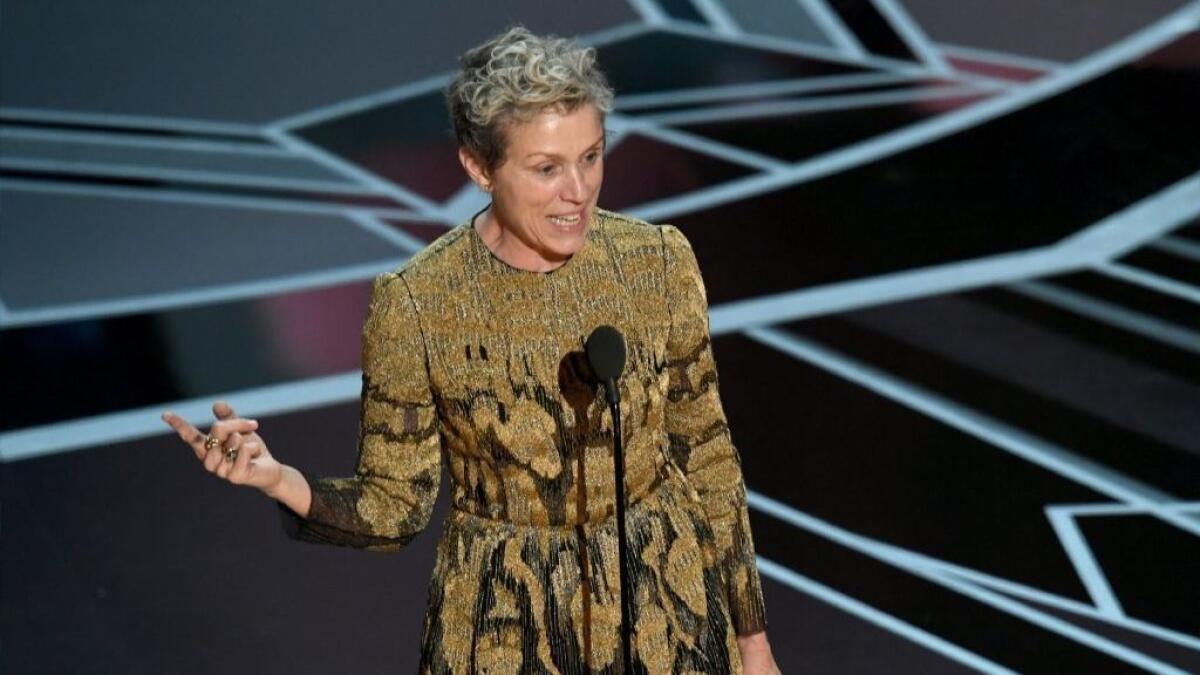
“I have two words to leave you with tonight, ladies and gentlemen,” said Frances McDormand in her Oscars acceptance speech last year. “Inclusion rider.”
Just like that, the little-known industry term was instantly catapulted into the public sphere. Actors, directors and producers began tweeting their pledges to adopt the inclusion rider — an additional contract provision stipulating that a project’s inclusion, onscreen and behind the scenes, reflect real-world demographics.
After lighting search engines and social media ablaze, can two words mentioned in an Oscars speech truly change the industry? One year later, the effect has largely been more symbolic than substantial. But major steps have been taken by its foremost champions.
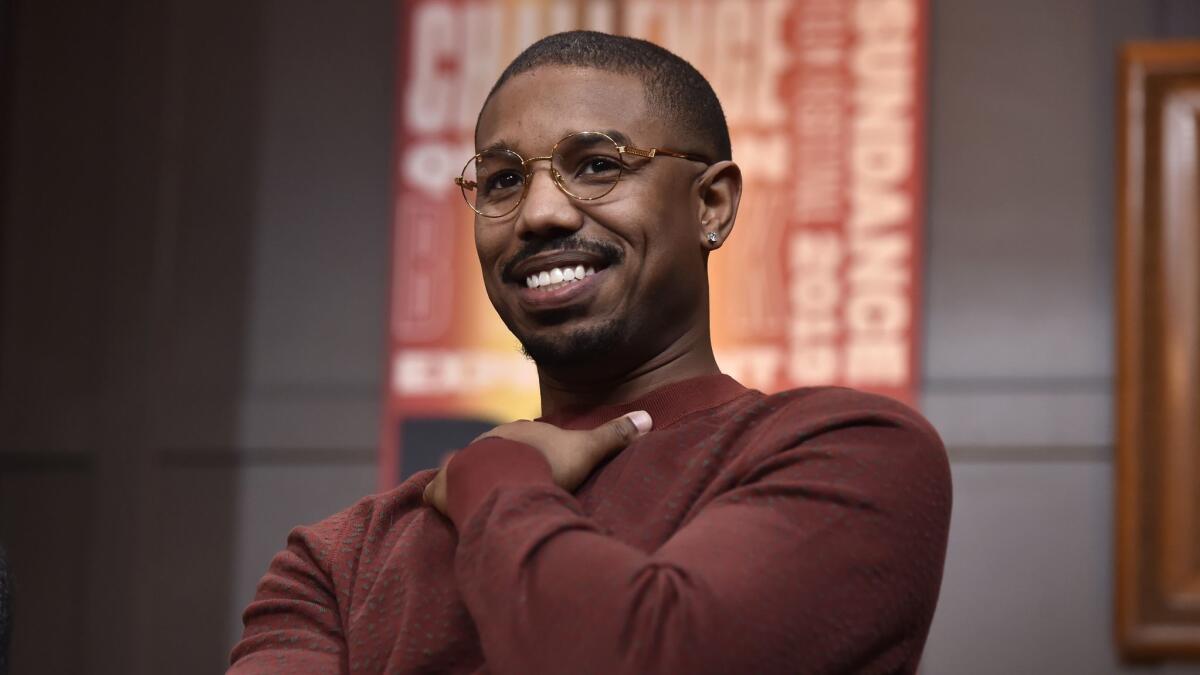
After pledging on Instagram to support the addendum, Michael B. Jordan and his production company Outlier Society signed first-look deals with Amazon Studios and Warner Bros., which adopt the inclusion rider on all future projects (including Warner Bros.’ legal drama “Just Mercy,” out in 2020). He also teamed with WarnerMedia (the parent company of Warner Bros., HBO and Turner) in September to create a company-wide commitment to diversity.
Warner Bros.’ Production Diversity Policy sees the studio pledging to ensure that diverse actors and crews are considered on all projects, and to work with directors and producers who actively increase diversity and inclusion across the industry. Likewise, an annual report “will not only show what we’ve accomplished, but where we can do better,” said Kevin Tsujihara, Warner Bros. chairman and chief executive, in an email. “This accountability is important to our company and will keep our efforts on track.”
The team behind the idea would like to remind doubters that the inclusion rider merely asks productions or companies to actively engage in good-faith efforts to consider candidates from backgrounds often underrepresented in Hollywood.
“This isn’t rocket science,” Kalpana Kotagal, one of the rider’s co-writers, told The Times. “These underlying principles are straightforward hiring practices for building better diversity in workplaces all over America: Slow down your hiring process; think about how to consciously build that deep and diverse pool of highly talented or highly qualified folks, and, then, go out and hire them.”

Female filmmakers Rachel Morrison, Milly Iatrou, Melissa Rosenberg, Mandy Walker and Penelope Spheeris talk about obstacles they have faced in the industry and why they believe representation of diversity matters.
Kotagal, a civil rights and employment attorney at Cohen Milstein, wrote the inclusion rider with Stacy L. Smith, founder and director of the data-driven Annenberg Inclusion Initiative, and Fanshen Cox DiGiovanni, head of strategic outreach at Matt Damon and Ben Affleck’s production company, Pearl Street Films. The three women combined their areas of expertise in 2016 to establish a template for the provision, which can be adapted to implement the equitable casting and hiring of women, people of color, people with disabilities, members of LGBTQ communities, etc.
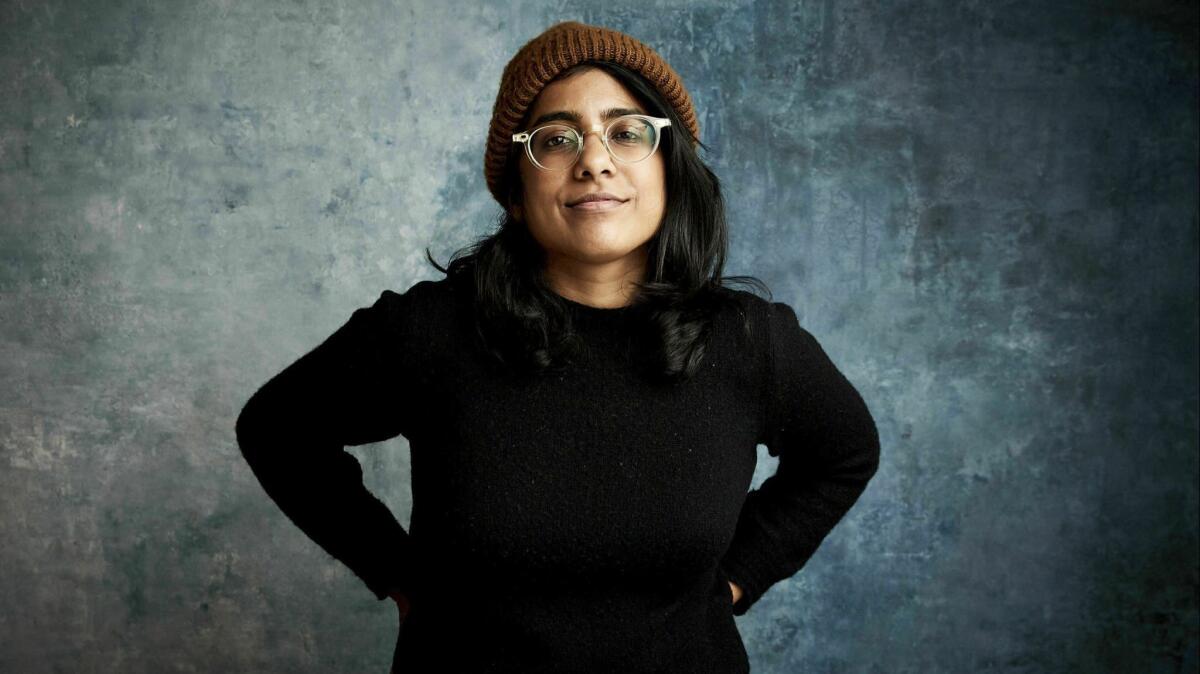
The provision was also adopted in the making of “Hala,” a competition title at this year’s Sundance Film Festival, which was nabbed by Apple in January. Since the coming-of-age story centers on a Muslim teen (played by Geraldine Viswanathan) torn between two cultural identities, writer-director Minhal Baig set out to at least consider more female candidates as potential partners behind-the-scenes.
“Of course we interviewed men too, and it just so happened that each person who was the most qualified for the job, who came the most prepared and had the strongest take on the material, was a woman,” said Baig of staffing women in all department head positions and 75% of below-the-line roles.
“I’ve never been on a set like that before,” she continued. “It was a little bit of extra effort, but that’s just part of the due diligence a director needs to do when they’re finding creative collaborators.”
If the inclusion rider is relatively simple to implement, then why isn’t it an industry standard? “There is this onerous thing that I hear it all the time, and it drives me crazy: ‘We can’t [adopt an inclusion rider] because we just want to find the best people,’ as if supporting this is somehow a compromise,” said Paul Feig, whose production company, Feigco Entertainment, is adopting the provision on all its future TV and film projects, including Netflix’s romantic comedy “Someone Great,” out April 19.
“Finding the right person for the right job is a huge deal, and you don’t compromise,” he continued. “All this is saying is, check the default setting of hiring all the guys we normally hire, and talk to some women, some people of color, some other people who have the experience in the industry, and see if there’s somebody else who shines.”
Such extra steps of widening one’s usual talent pool might be, for some, easier said than done, as it requires acknowledging and combating unconscious and explicit biases. “Early on, when we were first writing this, we got all these people saying, ‘Of course, we believe this; we don’t need this document because we’re already doing this,’ and then they don’t,” said DiGiovanni.
“All these well-intentioned people who think they’re doing things right anyway, they say they don’t see color — how do you push back against that?” she continued. “It’s frustrating. We cannot keep doing things the way we’ve done them traditionally for change to happen. So you can’t say that you’re committed to these issues and, at the same time, do things the way you’ve been doing them before.”

Those committed to industry-wide inclusion have made notable strides throughout the past year. In June, Brie Larson made a newsworthy speech about the need for inclusion among film critics, and announced commitments from the Sundance and Toronto film festivals to grant accreditation to journalists of underrepresented backgrounds (SXSW has done the same). Outlets including The Wrap and RogerEbert.com have since achieved gender equity among its pool of critics, while CherryPicks unveiled its site aggregating reviews by female critics.
Elsewhere, the Creative Artists Agency has launched numerous inclusion initiatives, such as a showrunner mentorship program, a searchable database of television writers of color and a boot camp for emerging diverse writers, as well as multiple networking events and leadership summits. WME also announced a company-wide effort to work with its clients on adopting inclusion riders, and its sister company Endeavor Content has also committed to GLAAD’s goal of ensuring that 20% of Hollywood films include LGBTQ characters by 2021.
And AMC Theatres announced a partnership with the marketing movement #GoldOpen to encourage bulk ticket sales for movies featuring those of underrepresented groups on and offscreen. Last year, the effort helped “Crazy Rich Asians” gross more than $238 million worldwide.
There are still significant inroads to be made, but televised moments such as McDormand’s Oscars speech and the widespread sharing of meticulous diversity studies on social media seem to be making a difference.
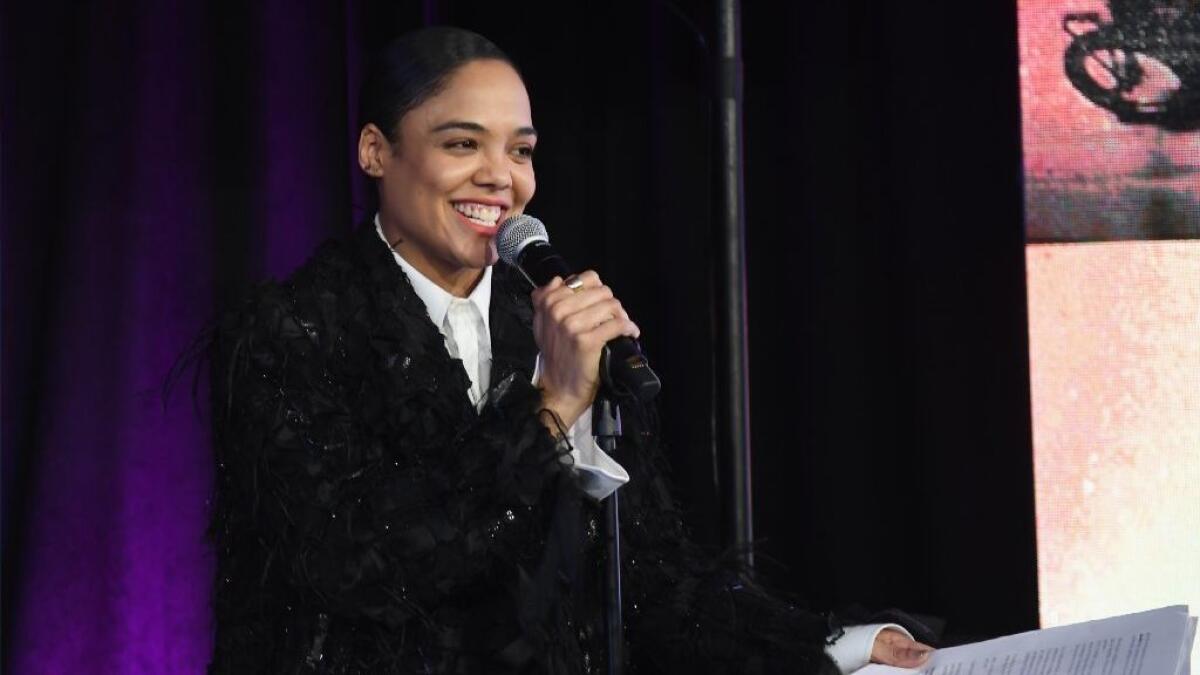
“It’s not just the researchers who are drawing attention to these issues, but also the biggest names and powerful decision-makers in the industry,” said Time’s Up entertainment director Nithya Raman.
That’s exactly why Time’s Up used social media to house the 4% challenge. Unveiled by Tessa Thompson at Sundance in January, the plan — created in partnership with the Annenberg Inclusion Initiative — has led to public pledges from more than 125 actors, producers, writers and studios to work with a female director in the next 18 months.
“It’s only with this real public uproar about how stark these numbers are that we can really make it unacceptable for the status quo to continue any longer,” continued Raman, who noted that Time’s Up is currently working on a strategy specifically to encourage inclusion in below-the-line positions.
“This groundswell of voices saying that this is unacceptable, that’s encouraging everyone to be more thoughtful and intentional about who’s on their list, who they’re hiring, why they’re making decisions that they do.”
And, hopefully, what happens in Hollywood does not simply stay in Hollywood. “This industry is a huge employer in itself, but it’s also an influential one because it has a spillover effect,” said Kotagal. “Movies and television shapes people’s worldviews and narratives and norms. So fixing problems in Hollywood can potentially help to fix problems in other industries, in other parts of America and around the world.”
Twitter: @cashleelee
More to Read
The biggest entertainment stories
Get our big stories about Hollywood, film, television, music, arts, culture and more right in your inbox as soon as they publish.
You may occasionally receive promotional content from the Los Angeles Times.
